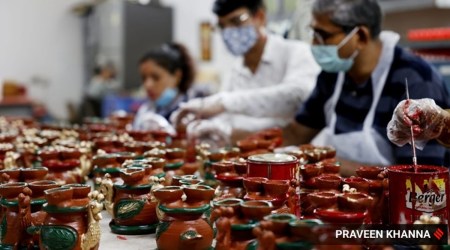 The autoimmune disorder occurs when your immune system mistakenly attacks the body’s tissues, thereby damaging the lining of the joints. (Photo: Getty/Thinkstock)
The autoimmune disorder occurs when your immune system mistakenly attacks the body’s tissues, thereby damaging the lining of the joints. (Photo: Getty/Thinkstock) Many people around the world experience joint pains, which could be arthritic in nature, and a careful evaluation can only be done by a doctor. There is always the question of whether women are more susceptible to arthritic pains, especially after menopause.
To answer this question, one has to first understand the concept of this degenerative condition, especially one that presents itself as rheumatoid arthritis. Dr Kaushal Malhan, director orthopaedics and joint replacement surgery at Fortis Hospital, Mulund, says rheumatoid arthritis (RA) is different from osteoarthritis.
“In RA, the inflammation is due to an autoimmune reaction. Three times as many women as men get RA. Also, women tend to be younger when they get RA, and, as with osteoarthritis, their pain is worse than in men. RA is known as ‘gathiya’ in Hindi — a dreadful disease that can cripple a person’s life,” the doctor explains.
According to him, RA is characterised by chronic joint inflammation, which can affect your knee, hands, fingers. This disorder may also damage the skin, eyes, lungs, heart, and blood vessels in some people. The autoimmune disorder occurs when your immune system mistakenly attacks the body’s tissues, thereby damaging the lining of the joints.
Why does it affect women more?
“Firstly – it is assumed, the female immune system is more robust and reactive; hence women get autoimmune diseases in far greater numbers than men. Second, it appears that hormones affect RA. Estrogen and progesterone levels frequently change due to menstruation, pregnancy, and even menopause. Such hormonal changes may affect the level of some proteins in the blood, raising the risk of inflammation,” says Dr Malhan.
Many women with RA, who get pregnant, experience fewer or no symptoms, only to find that they reappear after the baby is born. Breastfeeding is known to lower the risk; a woman who has breastfed for two years has reduced the risk of ever getting the condition by half.
 It should be noted that many patients also experience symptoms that don’t involve the joints. (Photo: Getty/Thinkstock)
It should be noted that many patients also experience symptoms that don’t involve the joints. (Photo: Getty/Thinkstock) Signs and symptoms
– Tender, warm, swollen joints
– Joint stiffness, usually worse in the mornings and after inactivity
– Fatigue, fever and loss of appetite
– Joint pain
– Joint redness
– Loss of joint range of motion
– Many joints affected (polyarthritis)
– Limping
– Joint deformity
– Both sides of the body affected (symmetric)
– Loss of joint function
– Anaemia
– Depression
It should be noted that many patients also experience symptoms that don’t involve the joints. It can affect many non-joint structures such as:
* Skin
* Eyes
* Lungs
* Heart
* Kidneys
* Salivary glands
* Nerve tissue
* Bone marrow
* Blood vessels
📣 For more lifestyle news, follow us on Instagram | Twitter | Facebook and don’t miss out on the latest updates!
- The Indian Express website has been rated GREEN for its credibility and trustworthiness by Newsguard, a global service that rates news sources for their journalistic standards.





































